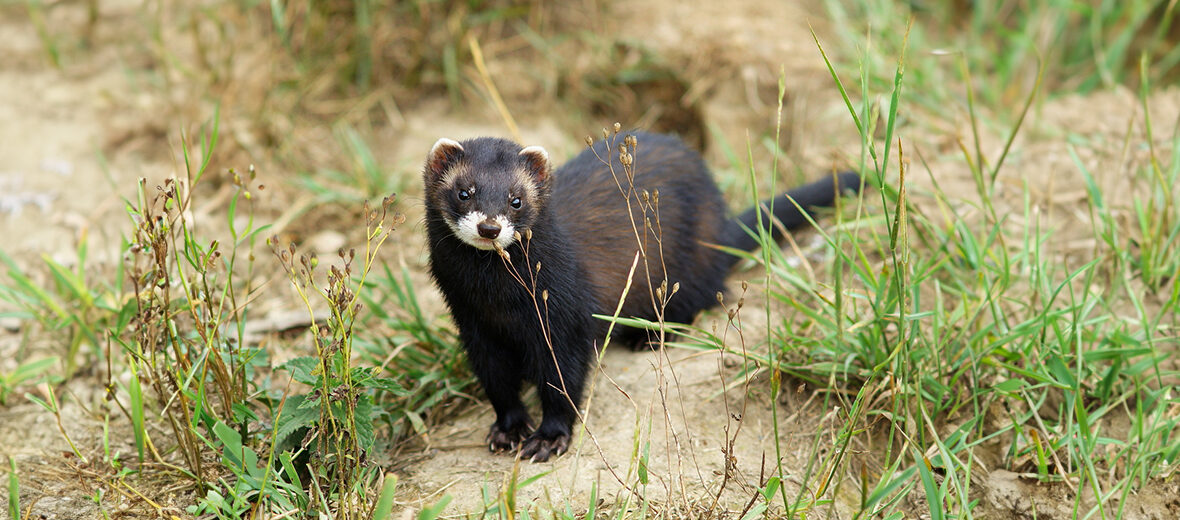
The European polecat, aka the forest or black polecat, is a Mustelid native to England, Scotland, and Northern Africa. They prefer forest plantations, open scrublands, marshes, areas near the rivers, and sea cliffs. There are 7 known subspecies of European polecat. Due to their furand their occasional desire to eat a chicken, these little critters were hunted extensively; almost to the brink of extinction. Due to successful conservation efforts, they are now listed as Least Concern by the IUCN.
First the Stats…
Scientific name: Mustela putorius
Weight: Up to 3.3 lbs.
Length: Up to 18 inches, plus up to a 6.6 inch tail
Lifespan: Up to 14 years
Now on to the Facts!
1.) As mentioned, they are part of the Mustelidae family. This family includes: the weasel, stoat, pine marten, otter, wolverine, mink, and even the badger.
2.) This species is sexually dimorphic as the males are 1.5 times larger than females.
3.) European polecats are nocturnal (active at night).
4.) They are the only known ancestor of the ferret, which was domesticated over 2,000 years ago for hunting rats and mice.
5.) The name “polecat” comes from the French phrase “poule chat” which means “chicken cat”. This label refers to the fact that polecats tend to have a liking for hunting chickens.
But wait, there’s more on the European polecat!
6.) Males are extremely territorial and will viciously defend their turf.
7.) Both sexes mark their territory via an oily, yellow, and stinky musk.
Did you know…?
During mating, the male will drag the female around by her scruff for up to an hour. Some mating ritual, eh? This actually causes the female to go into estrus and produce eggs & guarantees fertilization.
8.) European polecats prey on rats, mice, voles, and rabbits. Occasionally, as mentioned, they will also take chickens.
9.) Coyotes, dogs, bobcats, and owls all prey on polecats.
10.) Females birth up to 10 kits, but usually 5 – 7 after up to a 42 day gestation (pregnancy).
Now a Short European Polecat Video!
Also, check out the Critter Science YouTube channel. Videos added frequently!
Want to suggest a critter for me to write about? Let me know here.
Learn more about all kinds of cool critters, right here!
Photo credit: Peter Trimming



